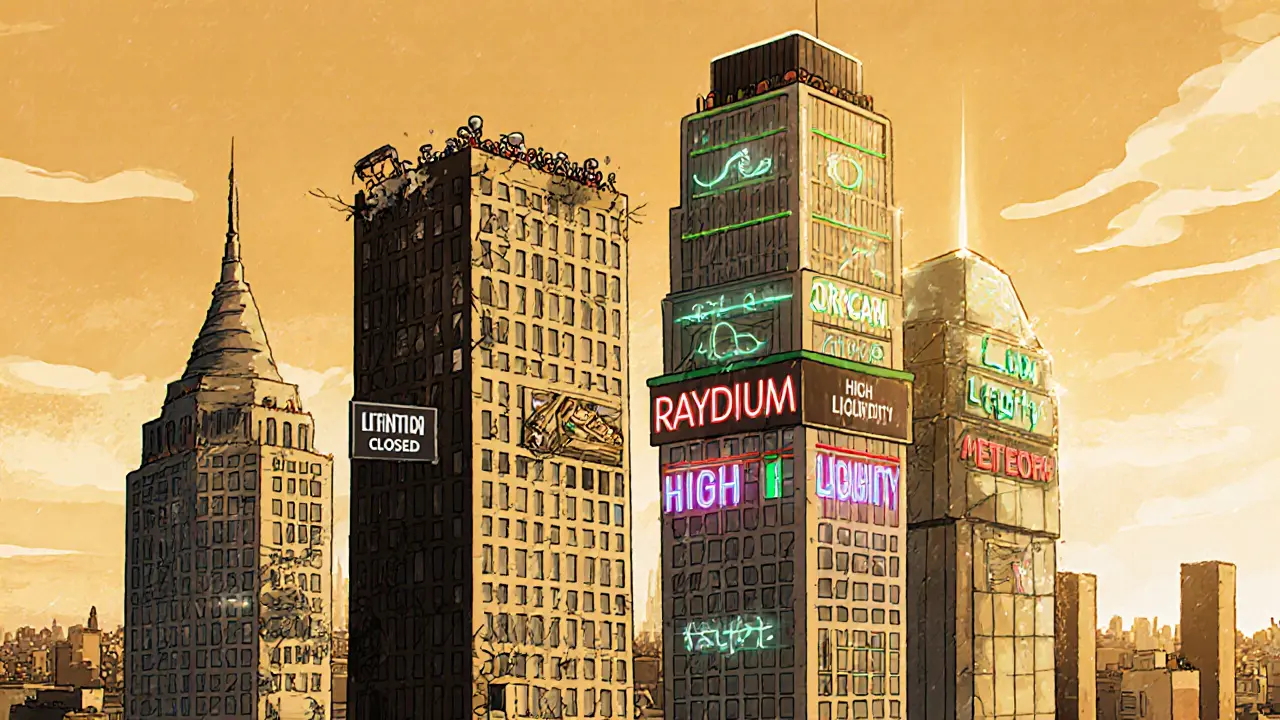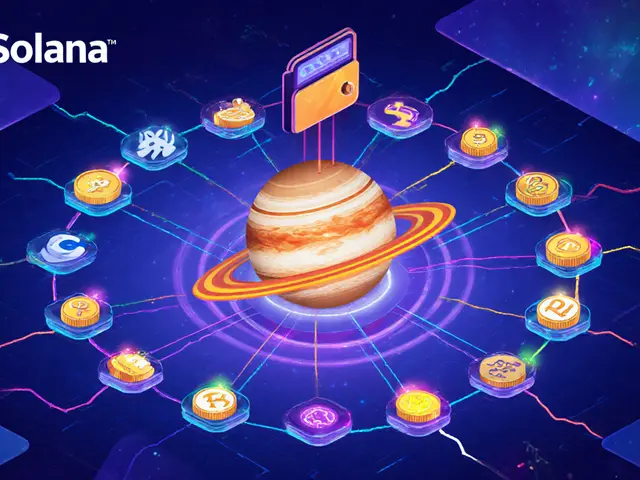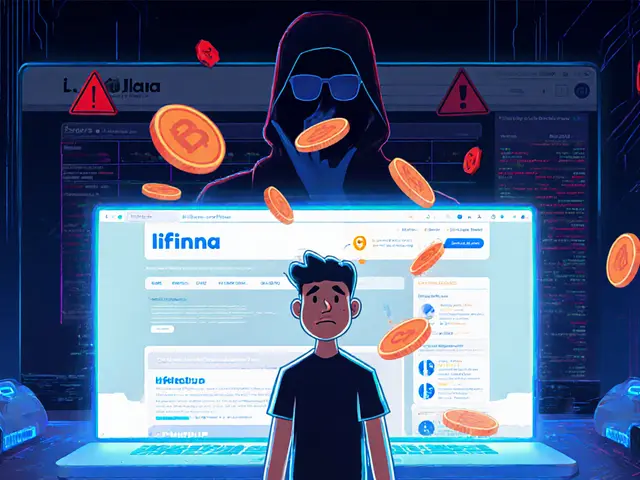Lifinity Crypto Exchange Review: Is This Solana DEX Worth Using in 2025?

When you hear "Lifinity crypto exchange," you might think it’s another big player like Binance or Coinbase. But it’s not. Lifinity is a decentralized exchange built on Solana, designed for traders and liquidity providers who want lower fees and faster trades. But here’s the real question: is it safe, useful, or just another niche project fading into obscurity?
What Is Lifinity, Really?
Lifinity is a decentralized exchange (DEX) that runs entirely on the Solana blockchain. Unlike centralized exchanges where you hand over your keys, Lifinity lets you trade directly from your wallet using an automated market maker (AMM). That means no order books, no middlemen - just smart contracts matching buyers and sellers.
What sets Lifinity apart is its focus on reducing impermanent loss - a common headache for liquidity providers on other DEXs. It uses oracle-based pricing to keep token values accurate and minimize slippage. That sounds good on paper, but how does it work in practice?
The native token, LFNTY, is used for governance and fee discounts. As of October 2025, LFNTY trades at $1.48. That’s down from its 50-day average of $1.69 and barely above its 200-day average of $1.18. The 14-day RSI sits at 33.83 - technically oversold. The Fear and Greed Index is 43.61, meaning most traders are cautious, if not outright nervous.
Trading Volume and Market Position
Here’s where things get concerning. Lifinity’s 24-hour trading volume hovers around $2,840. That’s not a typo. For comparison, Raydium - another Solana DEX - sees over $100 million daily. Orca? Around $50 million. Uniswap on Ethereum? Billions.
Lifinity ranks as the 5,345th cryptocurrency by market cap. That’s not just niche - it’s nearly invisible in the broader crypto landscape. Low volume means wide spreads, slippage on larger trades, and fewer liquidity pools. If you’re trying to swap a popular token like SOL or USDC, you’ll likely find better rates elsewhere.
Why does this matter? Because DEXs live and die by liquidity. No liquidity = no traders = no reason to use it. Lifinity hasn’t cracked that code yet.
Is Lifinity Secure?
Security isn’t just about the code - it’s about what’s around it.
There’s a major scam site out there: lfinity.io. Notice the missing "i"? That’s not a typo. It’s a deliberate phishing site designed to look exactly like Lifinity’s real platform. Once you connect your wallet - whether it’s Phantom, Solflare, or Backpack - the scammer drains your funds instantly. Blockchain transactions are irreversible. Once gone, they’re gone for good.
These scams spread through fake Twitter accounts, YouTube ads, and Google search results. Some even use AI-generated videos showing "Lifinity tutorials" that lead to the fake site. PCRisk has flagged this as a widespread social engineering operation.
The real Lifinity site is lifinity.io - double-check the URL every single time. Bookmark it. Never click links from social media. If you’re not 100% sure, don’t connect your wallet.

How Do You Use Lifinity?
If you’re still considering it, here’s how it works:
- Get a Solana wallet (Phantom is the most popular).
- Buy some SOL to pay for transaction fees (usually under $0.01).
- Go to lifinity.io - verify the URL.
- Connect your wallet.
- Choose a trading pair (e.g., SOL/USDC).
- Enter the amount and confirm the trade.
For liquidity providers, you deposit two tokens into a pool (like SOL and USDT) and earn trading fees. But remember: if one token’s price swings wildly, you could lose value - even if the overall pool grows. Lifinity claims to reduce this risk, but with such low volume, the fee rewards are minimal.
How Does It Compare to Other Solana DEXs?
Lifinity doesn’t just compete with Ethereum DEXs - it’s buried under its own blockchain’s competition.
| Exchange | 24h Volume | Token | Impermanent Loss Mitigation | Community Size |
|---|---|---|---|---|
| Lifinity | $2,840 | LFNTY | Yes (oracle-based) | Very small |
| Raydium | $120M+ | RAY | Partial | Large, active |
| Orca | $55M+ | ORCA | Yes (dynamic fees) | Large, growing |
| Meteora | $40M+ | MTA | Yes (concentrated liquidity) | Medium |
Raydium and Orca have millions in daily volume, real teams, active Discord servers, and regular updates. Lifinity? No major announcements in months. No developer blog. No roadmap. Just a website and a token.

Price Predictions: Hope or Hype?
You’ll find articles claiming LFNTY could hit $3.12 by 2026 or $28 by 2034. These aren’t forecasts - they’re fantasy fiction.
There’s no institutional backing. No major partnerships. No clear product advantage over rivals. The token’s value is driven almost entirely by speculation from a tiny group of traders. If the broader crypto market turns bearish - and it has been - Lifinity will be one of the first to collapse.
Analysts who predict these prices are often the same ones who promoted Dogecoin at $1 or Shiba Inu at $0.01. The math doesn’t add up when the product doesn’t have users.
Who Should Use Lifinity?
Here’s the honest answer: almost no one.
If you’re a trader looking for fast, cheap swaps on Solana - use Orca or Raydium. If you’re a liquidity provider wanting to earn fees - those platforms have deeper pools and better rewards. If you’re speculating on a low-cap token hoping for a 10x - you’re gambling, not investing.
Lifinity might be a clever idea in theory. But theory doesn’t pay bills. Real adoption does. And right now, Lifinity has none.
Final Verdict: Avoid Unless You’re a Speculator
Lifinity is not a bad project - it’s an irrelevant one.
It has a technically sound concept: reducing impermanent loss with oracles. But execution matters more than theory. Without volume, community, or updates, it’s a ghost town. And with phishing sites actively stealing from unsuspecting users, the risks outweigh any potential rewards.
Unless you’re willing to lose money on a token with no future, or get scammed trying to use it - skip Lifinity. There are dozens of better, safer, and more liquid options on Solana. You don’t need to chase the next big thing. You just need to avoid the next big loss.
Is Lifinity a scam?
Lifinity itself is not a scam - it’s a real decentralized exchange on Solana. But there are multiple fake websites (like lfinity.io) designed to steal your crypto. These scams are widespread and active. Always verify the URL: it’s lifinity.io, not lfinity.io or any variation. Never connect your wallet through links from social media.
Can I make money trading on Lifinity?
It’s possible, but unlikely. Trading volume is extremely low, so slippage is high and price impact is severe on even small trades. Liquidity providers earn minimal fees because there’s so little trading activity. The LFNTY token has shown no signs of sustainable growth. Don’t expect profits - expect losses.
What’s the best alternative to Lifinity on Solana?
For trading: Orca and Raydium. Both have higher liquidity, lower slippage, and active communities. For liquidity provision: Meteora offers concentrated liquidity pools that give better returns with less risk. These platforms are proven, updated regularly, and trusted by thousands of users daily.
Why is Lifinity’s trading volume so low?
Lifinity lacks liquidity pools with enough depth to attract serious traders. It doesn’t have marketing, partnerships, or a strong team presence. Most users simply don’t know about it, or they’ve tried it and moved on because the experience is worse than other DEXs. Low volume creates a vicious cycle: no traders → no fees → no liquidity → no traders.
Should I buy LFNTY as an investment?
No. LFNTY is a low-cap token with no clear utility beyond governance and fee discounts. Its market cap is tiny, volume is negligible, and there’s no evidence of adoption growth. Price predictions of $3 or $28 are pure speculation. If you buy it, treat it as a high-risk gamble - not an investment.
Does Lifinity have a mobile app?
No, Lifinity does not have a dedicated mobile app. It’s a web-based platform that works through Solana wallets like Phantom or Solflare, which do have mobile apps. You can access Lifinity through your phone’s browser, but there’s no official app to download from the App Store or Google Play.
Is Lifinity built on Solana only?
Yes, Lifinity is built exclusively on Solana. It doesn’t support Ethereum, BSC, or other chains. This limits its user base to those already active on Solana. If you don’t use Solana wallets or don’t hold SOL, you can’t use Lifinity.

